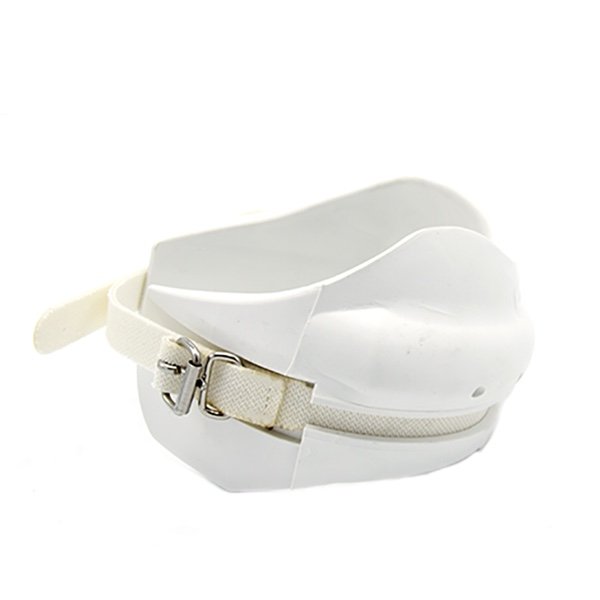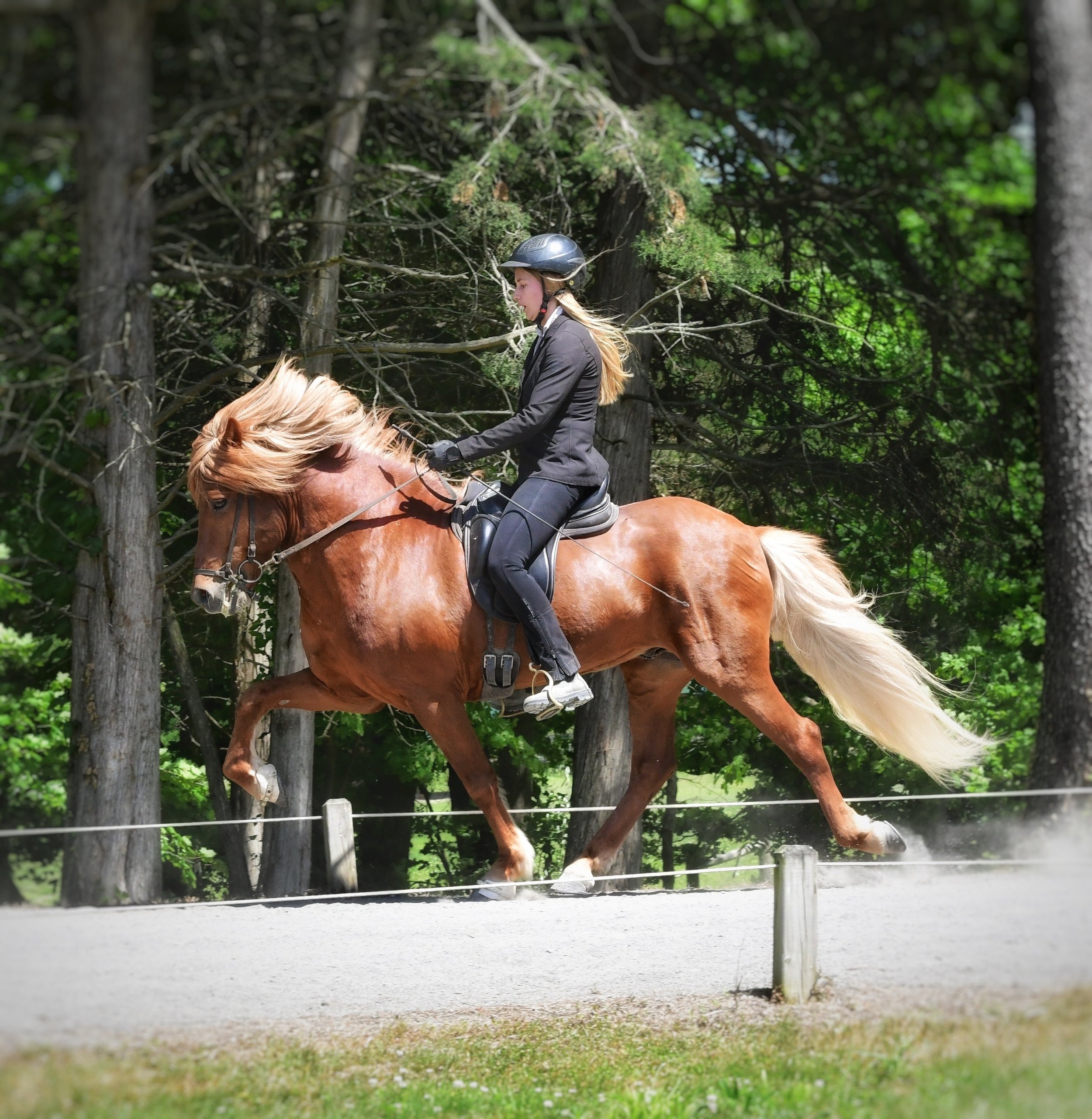 Image 1 of 2
Image 1 of 2

 Image 2 of 2
Image 2 of 2



G-Boots
By G-BOOTS
Price is for one pair of boots.
Why we love them…
G-Boots are strap on weighted boots that come in a wide range of sizes. G-boots have been on the market for years and are a standard piece of equipment at most Icelandic horse training stations.
White sizes: 145g, 165g, 185g, 200g, 225g, 240g
Black size: 120g
Consider this…
G-Boots curl in and around the bulbs of the heels for extra protection. Sometimes they can curl in abit to much and rub certain horses. We have only see this happen when they are brand new. Make sure to uncoil the curve to the top of the boot before use.
About weighted boots in general:
The role of weighted boots is first and foremost protection. Weighted boots primarily protect the bulbs of the heels and pastern, where the most common interference injuries occur. For the same reason the boots also help prevent horses from stepping off their shoes. Here at Taktur we often use boots when we are training a horse that has balance issues. We never train pace or fast tempo tölt without wearing boots. If a horse hits itself once, the trauma of that incident can often create a vicious cycle. The horse becomes tense, interferes due to the tension, hurts itself, and becomes even more tense. The use of protective boots prevents this cycle from ever starting.
Weighted boots are not only protective but also come in a range of very specific weights. Riders often underestimate the huge impact just a couple of grams of weight can have on a horses movements. We use boots only on the front hooves. Weight on the front legs increases the amount of time that leg spends in the air. The weight of the boot adds to the momentum of the legs movement usually causing more expressive action. In tölt more weight on the front tends to decrease paceyness and increase trottyness. More weight will often cause a horse to be more secure in their trot and canter, but may also increase unevenness particularly in tölt. How much weight is suitable for your horse will change in respects to your horses gait distribution, what gaits you plan on riding that day, possible beat/balance issues in those gaits, general strength and training level, what speeds you plan on riding, how much movement you need, and your riding skills.
The boots are colored white because it draws attention to the horses movements better than other colors. For this reason we always use white boots in sport competition. In sport competition you are allowed to use up to 250g boots. This is why we do not sell boots heavier than 240g as that keeps riders within a safe range of the allowed weight. In breeding evaluations the rules are stricter as they are trying to ascertain the horses natural born talent. For this reason the maximum weight allowed in evaluations is 120g and you may only ride with black boots.
It is our opinion that weighted boots are not for daily use. They are to help bring out the peak performance in trained horses. They should be used in preparation for shows but not everyday. They are a tool that assists in achieving certain types of movement but they do not address the root cause of many of these movement issues. For example a pacey horse may be made less pacey by weighted boots. However, that horse might be pacey due to stiffness in the back that the boots do nothing to address.
At Taktur we have collected every weight and style of boots that we can get our hands on. We keep an entire shoe rack of boots for both training and show. We are quick to observe the impact that just a couple of grams can have and adjust the weight, to whatever is best for the horse in that moment.
By G-BOOTS
Price is for one pair of boots.
Why we love them…
G-Boots are strap on weighted boots that come in a wide range of sizes. G-boots have been on the market for years and are a standard piece of equipment at most Icelandic horse training stations.
White sizes: 145g, 165g, 185g, 200g, 225g, 240g
Black size: 120g
Consider this…
G-Boots curl in and around the bulbs of the heels for extra protection. Sometimes they can curl in abit to much and rub certain horses. We have only see this happen when they are brand new. Make sure to uncoil the curve to the top of the boot before use.
About weighted boots in general:
The role of weighted boots is first and foremost protection. Weighted boots primarily protect the bulbs of the heels and pastern, where the most common interference injuries occur. For the same reason the boots also help prevent horses from stepping off their shoes. Here at Taktur we often use boots when we are training a horse that has balance issues. We never train pace or fast tempo tölt without wearing boots. If a horse hits itself once, the trauma of that incident can often create a vicious cycle. The horse becomes tense, interferes due to the tension, hurts itself, and becomes even more tense. The use of protective boots prevents this cycle from ever starting.
Weighted boots are not only protective but also come in a range of very specific weights. Riders often underestimate the huge impact just a couple of grams of weight can have on a horses movements. We use boots only on the front hooves. Weight on the front legs increases the amount of time that leg spends in the air. The weight of the boot adds to the momentum of the legs movement usually causing more expressive action. In tölt more weight on the front tends to decrease paceyness and increase trottyness. More weight will often cause a horse to be more secure in their trot and canter, but may also increase unevenness particularly in tölt. How much weight is suitable for your horse will change in respects to your horses gait distribution, what gaits you plan on riding that day, possible beat/balance issues in those gaits, general strength and training level, what speeds you plan on riding, how much movement you need, and your riding skills.
The boots are colored white because it draws attention to the horses movements better than other colors. For this reason we always use white boots in sport competition. In sport competition you are allowed to use up to 250g boots. This is why we do not sell boots heavier than 240g as that keeps riders within a safe range of the allowed weight. In breeding evaluations the rules are stricter as they are trying to ascertain the horses natural born talent. For this reason the maximum weight allowed in evaluations is 120g and you may only ride with black boots.
It is our opinion that weighted boots are not for daily use. They are to help bring out the peak performance in trained horses. They should be used in preparation for shows but not everyday. They are a tool that assists in achieving certain types of movement but they do not address the root cause of many of these movement issues. For example a pacey horse may be made less pacey by weighted boots. However, that horse might be pacey due to stiffness in the back that the boots do nothing to address.
At Taktur we have collected every weight and style of boots that we can get our hands on. We keep an entire shoe rack of boots for both training and show. We are quick to observe the impact that just a couple of grams can have and adjust the weight, to whatever is best for the horse in that moment.
